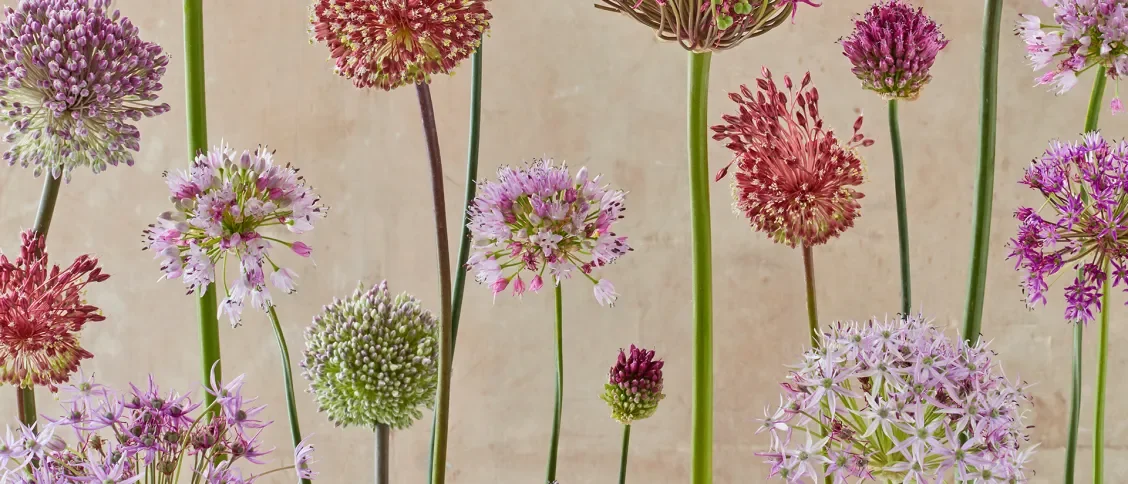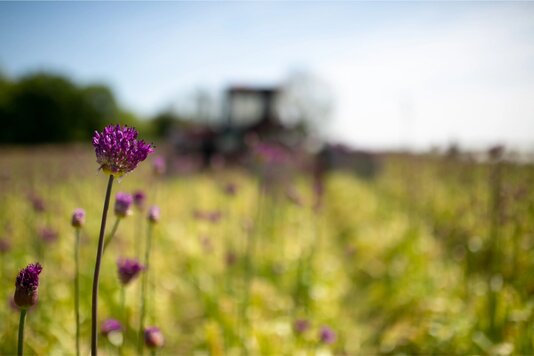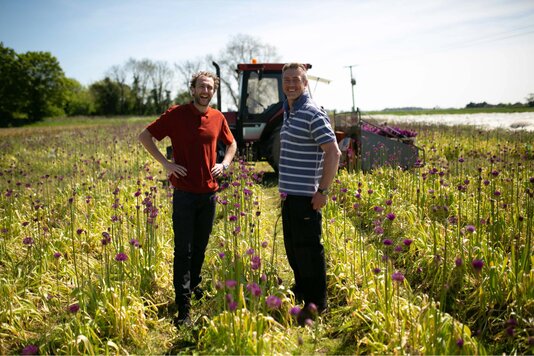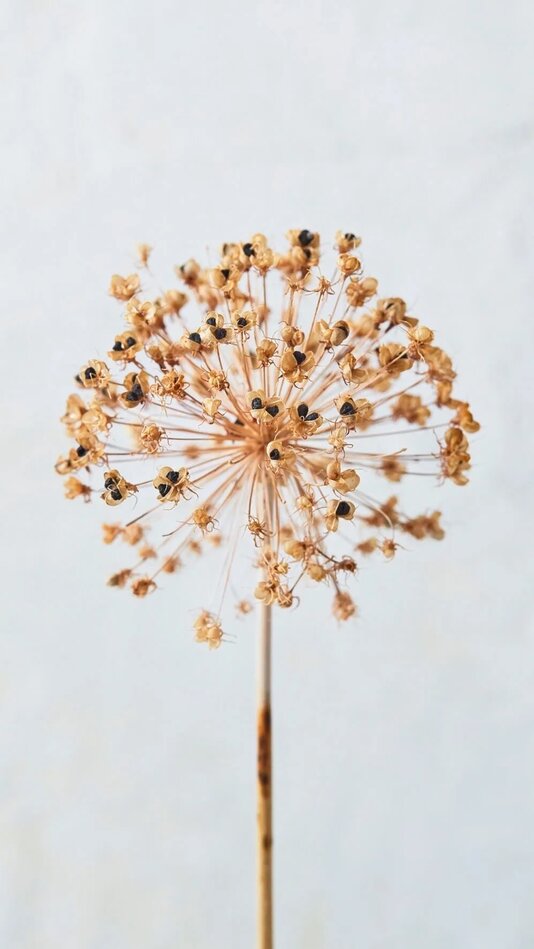
Alliums: Everything You Need To Know
With their hundreds of tiny, delicate flowers all densely packed around one eye-catching globe, on sight you’d never know what family the allium flower belongs to. Clue: you wouldn’t catch a vampire with one of our allium arrangements in their home…
Yep, that’s right the allium is a member of the garlic family and we find it fascinating that two plants can be so similar but so different. There’s also plenty more to learn about the allium and why we love it so, read on…
Where do alliums come from?
The history of these remarkable looking blooms goes all the way back to the Roman Empire, as they are one of the world’s oldest cultivated plants. The Romans used the word “allium” to refer to garlic but, since then it’s become the family name of all onion crops – an enormous family that contains over 200 species and thousands of cultivars.
However, they may be related but they’re a very different plant from their cousins, hence their other name ‘the ornamental onion.’ Allium flowers are found all over the Northern Hemisphere including, North America, the Middle East, western China, the Pyrenees, the Alps, and the Mediterranean.

What’s the history of alliums?
With their large beautiful globe head, it’s not hard to see why Ancient Egyptians regarded alliums as a symbol of the universe. They used them extensively in their drawings, and inscriptions particularly on Ancient Egyptian monuments and tombs.
Later on, in the Victorian era they became very popular in ornamental displays (and we still think they’re just as breathtaking as a centrepiece) especially as, in the Victorian Language of Flowers, they mean ‘you’re perfect, elegant, unity and patience.’ Why, thank you, alliums!

What do alliums symbolise?
The Allium symbolises five different things, based on how the flower grows – those hundreds of miniature flowers all coming together on one huge globe, held steadily in place by one thick stem. They represent…
Humility: In comparison to other flowers (we’re looking at your gerbera daisy) allium has a more subdued colour. This, coupled with a round shape, serves as a symbol of humility – reminding us all that, just like us, flowers come in all shapes, sizes and colours.
Patience: As alliums take time to grow, it makes the appearance of their blooms all the more sweet. They also have a much shorter time span, from late April to the end of June, unlike their cousins onions and garlic which grow all year round. Amazingly though, they’ve been known to grow in some pretty wild terrain including Mount Everest! Proof that, with time, beauty can appear even in the toughest of circumstances.
Good fortune: Alliums are universally loved, not just by us humans but also by bees, butterflies and other insects, particularly when planted as part of a group. This is why they have come to symbolise good fortune – they bring joy, together.
Prosperity: All those teeny tiny flowers, and its ability to multiply allium represents prosperity and abundance.
Beauty: For obvious reasons (just look at it!) the allium is the perfect bloom to gift to someone you find beautiful.
Why we love alliums
Flowers have an ability to transport you to another place. And, for us, one sight of an allium, transports us to special gardens of our lives. We can see ourselves, in our parents’ or grandparents’ garden with a cup of tea resting in our hands.
As, come Spring, these glorious globes of nature are dominating vases and gardens across the UK. Due to their height they can jazz up any arrangement. They are perfect with lilies, peonies, and snapdragons. What makes them even more wonderful is that when they fade and lose their colour – what remains is their delicate, beautiful seed head. Don’t forget to appreciate that final detail they leave you with. Particularly as you can also dry them out perfectly so you can hold back and add them to a vase on their own or to other arrangements.

Where we get our alliums from
Each year Lance’s farm, near Spalding in Lincolnshire, grows a football pitch sized plot of flowers… and we take the lot. Traditionally a vegetable farmer by trade, he only grows a small crop of flowers and we’re grateful for them all. If demand gets too high we turn to our provider Sjaak, based in Holland.
How to care for alliums
To look after alliums, change their water, and food, every three days to keep them blooming. This will also help reduce the slight onion-y aroma they tend to give off (hey, it’s not Alliums fault! You know who they’re related to!)

If you’d like to dry alliums, remove them from our flower subscription arrangement and leave them to dry out in a vase. They will retain their shape for years. You could also spray paint them gold or silver for a Christmas decoration (or indeed any time you want to add some sparkle to your life.)
To use their seeds, take the allium out and leave to dry for two to three weeks. Then pop the heads upside down in a paper bag and shake ‘em. You will be left with a bag of seeds. In late April or early May, scatter them in your garden or put 20-30 seeds in a pot. Then, watch them grow! By next spring you’ll have some lovely alliums popping their heads up in your garden.
Up next...
Your ultimate guide to peony care
Peony season has well and truly arrived and already we don't want it to end. Make the most of your peonies with these easy care tips.
From fresh bud to long-lasting bloom
Our flowers are the freshest around, arriving in bud and opening to their full beauty at your home. Find out how you can make the most of your arrangement to enjoy it for up to two weeks or longer.
